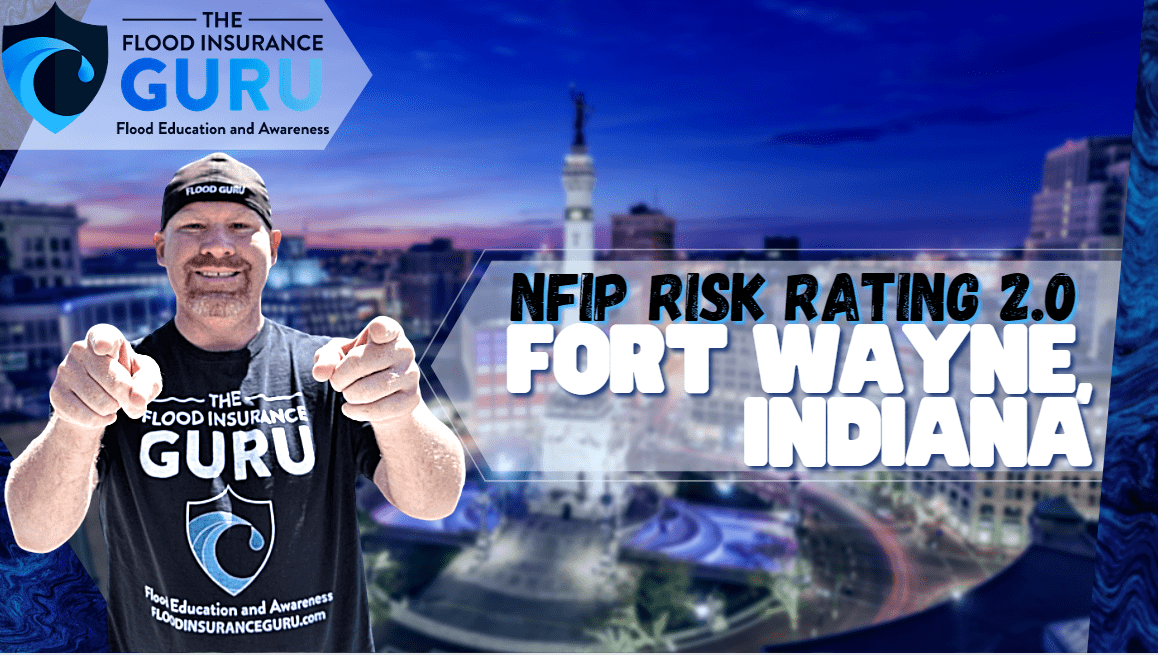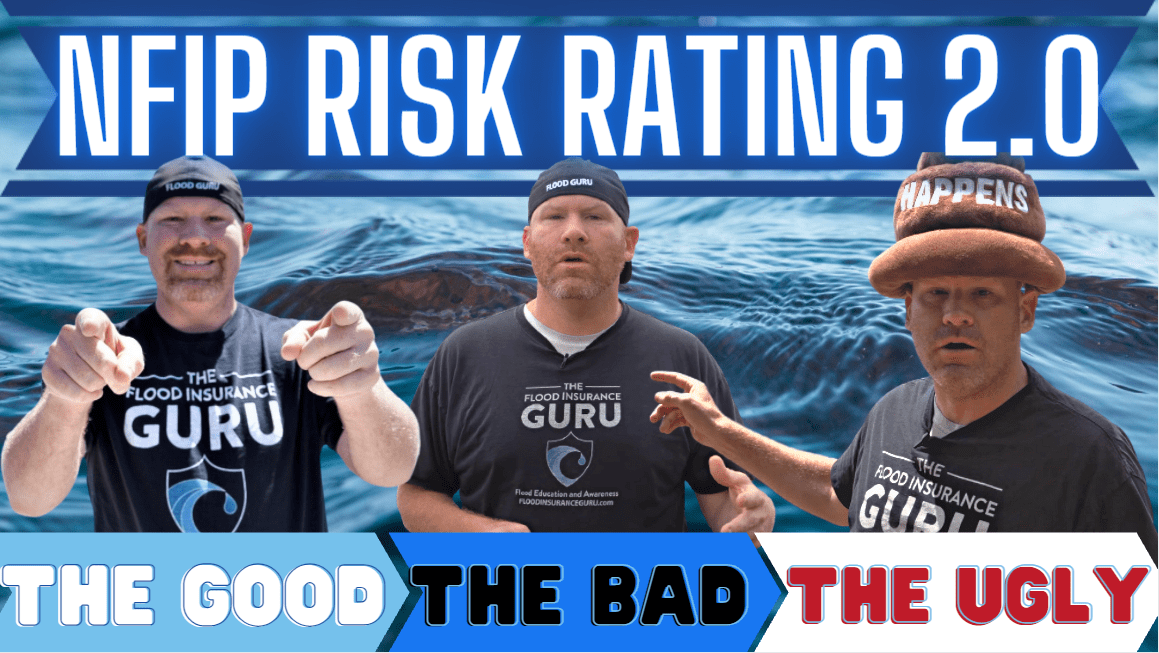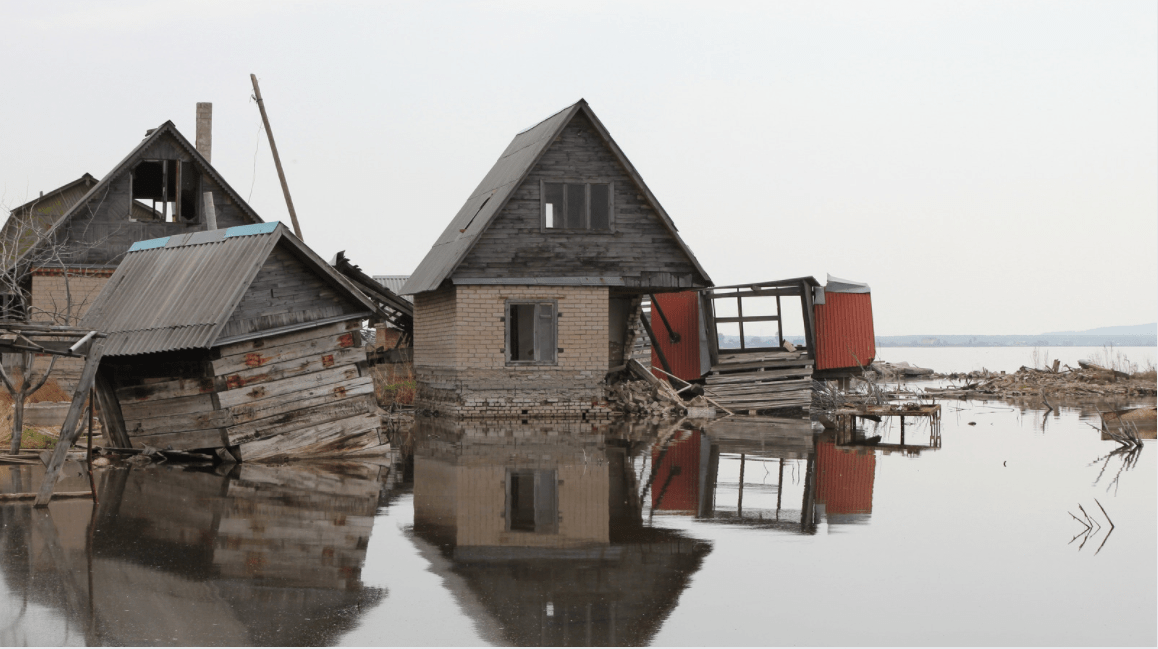Everything You Need to Know About Flood Insurance in Fort Wayne
October 4th, 2021 | 6 min read
By Chris Greene

From the upcoming changes with the Risk Rating 2.0, the flood risk mitigation measures, and flood insurance options, we want to talk about everything you need to know about Fort Wayne, Indiana.

Risk Rating 2.0 Changes
We recently did an interview with Fox where we were able to discuss this briefly however today, we want to really unpack what's happening with Fort Wayne and cover the whole nine yards. What is surprising to see — trust me, your wallet will be in a shock too — is that Indiana will be experiencing an increase across the board for about 54% of flood insurance policyholders.
The Risk Rating 2.0 is finally here with us and with this new program by the Federal Emergency Management Agency (FEMA) and the National Flood Insurance Program (NFIP) aimed for equity in action, we will also see some major changes when it comes to flood insurance rates. These changes are mostly due to how homes will now be having what we'd call "the fingerprint of flood risk".
This fingerprint will be determined and identified through various factors concerning the risk of flooding on your property. Generally, this means that homes will now have a unique rating flood insurance premium rates. Overall, this new rating structure will be called your "flood risk score".

There are things that are staying and changing when it comes to calculating your flood risk score.
The remaining features are as follows:
- Zone designation in the flood insurance rate map (e.g. special flood hazard areas (SFHA) or preferred flood zones) however flood insurance rate maps will only be used from a regulatory standpoint, not rating.
- Distance to a water source.
- Prior flood insurance claims or flood claims made with the property
- Policy assumption and grandfather rule.
The new things that will come with the Risk Rating 2.0 are as follows:
- Types of floods that your property experience. This can be either pluvial or the accumulated water due to rain, runoff of collected water that flows from higher areas, storm surge and coastal erosion, dam/levee damage or overflow, and even a combination of these things.
- First-floor height and elevation of the structure. A new feature that determines your flood risk score is the distance between the ground (grade) from your first floor or the first habitable floor of your property.
- Flood Risk Mitigation Measures made on the property. Is the lowest floor above the base flood elevation? Are there enough flood openings to let floodwaters through?
- Replacement Cost. How much will it cost insurance companies to rebuild or repair your home when damaged?
Now, since we already understand the new program, let's talk about the upcoming good, bad, and ugly changes to Fort Wayne.

Good
Fort Wayne's community will have a total of about 810 properties impacted by the changes from the Risk Rating 2.0 event. Starting with the good things, we will see starting October 1st, 2021 that 401 properties, or 49% will be getting a decrease on flood insurance rates.
208 or 23.6% of these properties will experience a $0 to $50 decrease which means that there might be no change in the premiums you're going to pay or you might get less than $600 on your bill compared to your previous one.
A piece of even better news for 25.4% or 193 properties in Fort Wayne is that you'll start to see a decrease that ranges from $50 to more than $100 per month. Simply put, this could easily get your flood insurance policies to become $1200 cheaper compared to when it was in the legacy or traditional NFIP program.
Bad
There are also bad changes coming to the community of Fort Wayne with this new Risk Rating 2.0 program. Generally, this bad change will only have a slight increase in premiums and we will see about 40.5% of the properties experience this change in rates. This means that about 332 properties will be getting an increase in the cost of flood insurance that ranges from $0 to $10 per month.
This can mean that you might not see any change to your flood insurance policies or you might see an increase of $120 per year on your policies with FEMA and the NFIP.
Ugly
Lastly, we also want to discuss the ugly changes to the community of Fort Wayne when it comes to NFIP 2.0.
Overall, about 10.5% or 86 properties and buildings will get impacted by this ugly change. We're now moving into more significant flood insurance premium rate increases. We want to break this number down into two so that you can get a better idea of how your community might get impacted by this change.
About 10.1% will start to see the cost of flood insurance with FEMA and the NFIP becoming more expensive. This means that 83 properties will get an increase on premium rates that ranges from $10 to $50 per month.
On the other hand, the remaining 0.5% or at least 3 properties will start to see an increase ranging from $50 to $90 per month.
Community Rating System
Now, you might be wondering, how can we then help ourselves and lower these flood insurance rates with FEMA and the NFIP? The biggest answer to that is what we call the CPR to flood insurance, the Community Rating System (CRS).
The National Flood Insurance Program’s (NFIP) Community Rating System (CRS) is an incentive program that your community can voluntarily apply to. This program recognizes and encourages community floodplain management activities that exceed the minimum NFIP requirements.
When it comes to the CRS, your community will be scored and ranked. The ranking will start with Class 10, being the lowest and can mean no discount at all, and Class 1 being the highest rank a community can get and will get you a 45% discount on flood insurance premiums.

In order to do this, the community must show multiple efforts on flood mitigation or reducing the flood risks on the community. Being in that higher class ranking means that your community will be rewarded equally depending on your CRS score. Generally, the basic concept is the higher your score is, the more discount you will get.
Fort Wayne, as of October 1st, 2021, is sadly in the Class 10 ranking which means that residents, homeowners, property owners, and business owners who are also FEMA policyholders won't get to see a discount on their flood insurance rates.
Flood Insurance Options in Fort Wayne
The NFIP
The National Flood Insurance Program (NFIP) is purely managed by the federal government since this is FEMA's answer to flood insurance. An NFIP flood policy can get you flood coverage on both your dwelling and the contents within it. When we say dwelling, this simply pertains to either the residential property or commercial building that you're trying to insure with NFIP and FEMA; contents will be more about the personal property and items you have inside the insured building.
There is a coverage limit when it comes to federal flood policies. Flood damage to buildings will be covered to a maximum of $250,000 for residential policies and can only go up to $500,000 maximum if it's for a commercial property. Regardless of the type of property you have written, you can expect to get a $100,000 maximum contents coverage from an NFIP policy.
There's also what's called the Increased Cost of Compliance (ICC) coverage. This is a $30,000 additional coverage for your property in order to make sure that there are flood mitigation efforts made on the property according to the federal government's standards. Generally, this can include sandbagging your property, installing floodproofing walls, raising your lowest floor from the base flood elevation levels, and putting flood openings. The labor that goes into making these mitigation efforts happen will also be covered under the ICC.

The good thing about the NFIP and FEMA is that they won't really push you immediately to the waters. Instead, they will allow you to ease into the possible flood insurance rate changes you'll be getting with your new flood zone. This is what's called newly mapped rates where FEMA will have you pay a lower flood rate or premium on your first year after the flood map update. This is also known as the Preferred Risk Policy (PRP) and will slowly start to increase until you meet the actual flood insurance premium expected to be paid for in your new flood zone.
You can start enjoying your NFIP policy after a 30-day waiting period from the flood insurance purchase.
The Private Flood
If the federal flood insurance option doesn't really work for you then you can manage this new floodplain mapping through the private flood insurance market. It's important to note that this market will solely be managed and provided by private insurance companies which generally means that the red tapes FEMA and NFIP has to go through won't be there.
The first thing you'll immediately see with the private flood market is that there are significantly shorter waiting periods for your flood policy. Once you have everything settled and paid for, a private flood insurance policy can take effect up to 14 days maximum.
Another good thing coming out of private flood insurance is that there are no coverage limits. This means that you won't really need to stress over how to get covered for a $500,000 home since it will be fully covered by your policy. This is the same with contents coverage and you'll also get additional coverages like replacement costs, additional living expenses, and loss of use.

Fair warning, it's a known issue in the private insurance market in general that they will do moratoriums when there are risks that are too high for their comforts.
This simply means that they will either put a stop or take a break from providing flood insurance policies to a certain area that has higher risks. There's also a chance that you might not get to buy flood insurance from them once they decide to non-renew your policy.
At the end of the day, the choice of where you'll be getting flood insurance depends on you. What's really important is that you know your flood risks and have enough protection from all possible outcomes of a flood event such as flood loss and flood damage.
If you have questions on these new FEMA flood maps, maybe you want to determine your flood zone, knowing your area's average flood depths and flood data, or anything about flood, reach out to us.
Remember, we have an educational background in flood mitigation and we want to help you understand flood risks, your flood insurance, and mitigating your property long-term.
-rgb-300px-w-300ppi.png?width=350&height=124&name=tfig-logo-inverted-(for-dark-backgrounds)-rgb-300px-w-300ppi.png)
-rgb-300px-w-300ppi.png?width=301&height=107&name=tfig-logo-inverted-(for-dark-backgrounds)-rgb-300px-w-300ppi.png)

